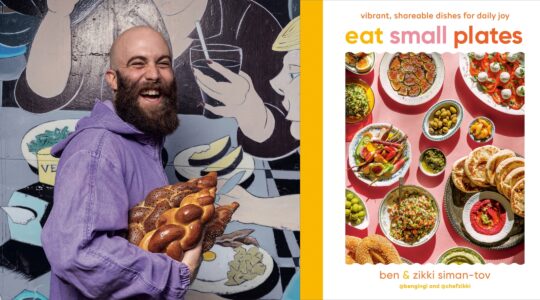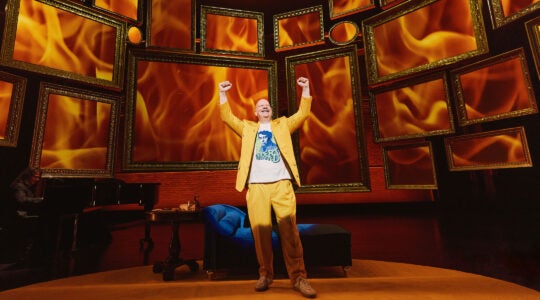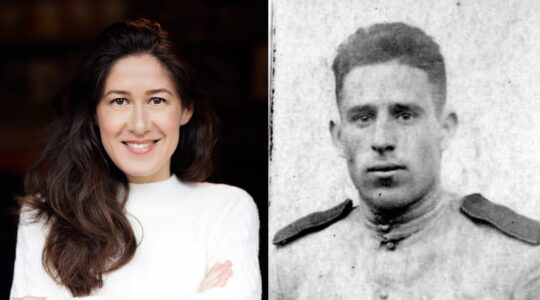At a curatorial meeting at The Jewish Museum a couple of years ago, Jens Hoffman, the deputy director of exhibitions and public programs, inquired as to why the museum owned so many Judaica objects in replica. Curator Susan Braunstein replied that the many examples of, say, a certain Chanukah menorah, add depth for research purposes. The conversation sparked what would become the museum’s big show this spring.
The museum is staging an exhibit, “Repetition and Difference,” which will be composed of pieces from its renowned Judaica collection — some as old as the eighth century BCE — juxtaposed against brand-new works by contemporary artists who use duplication in their work.
“By showing the Judaica in this light, we can appreciate it for its formal qualities, not just its functional and ethnographic uses,” said Braunstein.
The 350 Judaica objects range from marriage contracts from Iran, to ancient shekel coins from Lebanon, to the aforementioned Chanukah menorahs from Eastern Europe. Through the assortment of historic items as well as the new art — much of it fresh from the studio — new ways of understanding the production and creation process emerge, as do alternative meanings.
The subtle differences among objects that are similar at first glance have something to say about the social and political environment in which they were made, as well as about experimentation in art making.
The process of curating “Repetition and Difference” began with the Judaica, and only once Hoffman and Braunstein began conceptualizing the exhibit did they decide to incorporate contemporary art. They did this through the lens of philosopher Gilles Deleuze’s book “Difference and Repetition,” which was published in 1968. As a result, besides being an object-rich, the exhibit will explore Deleuze’s difficult concepts through the presentation of the art.
The curators expanded the core themes of repetition and difference to extend to the accompanying texts. For instance, they collaborated on the exhibit’s wall text, integrating Deleuze’s ideas. They then had the text edited four humorously different ways: traditional museum style, exaggerated academic style, breezy popular magazine style, and inept textbook style. All four versions express the same idea but the tone and style vary. The four texts will be hung side by side at the entrance of the show. The curators also had special wallpaper designed for the gallery walls.
“Some people will come for the Judaica and be introduced to the contemporary art, and vice versa,” said Hoffman. “Everyone will see a dialogue between the present day and the history of Judaica.”
In many instances the art will be displayed beside the Judaica, inspiring a dialogue of sorts on their formal relationships, and elevating the Judaica’s status to that of fine art. The exhibit also harkens back to the history of the “ready-made,” a term for quotidian, manufactured items elevated to the status of fine art that was made famous by Marcel Duchamp in the early 20th century.
A difference between the Judaica and the fine artworks is the question of function — the spice containers were created for a specific and intended use, whereas Los Angeles-based artist Walead Beshty’s televisions technically work only in the sense that they power on; he has drilled holes in them, causing the screens to display only blurred pictures.
“The notion of the idea of standardization is called into question,” remarked Braunstein of the Tyrian Shekels from 126 BCE-59 CE. The coins were produced in a mint, but they were hand-struck so they are all different. Some are off-center, uneven, even fuzzy sometimes. The value remained consistent, said Braunstein, “because of the silver content, and [the fact] that they were branded as being from Tyre meant that it didn’t matter how well they were produced.” They were the only coins Jews would use for trading at the Temple in Jerusalem.
The pieces of paper confetti taped to the floor in Amalia Pica’s “Stabile” echo the coins’ shape. In addition, artists John Houck and N. Dash use a similar imprinting process that produces results that are not uniform.
The work of New York City-based artist Sarah Crowner came to Hoffman’s mind when he saw the museum’s collection of Torah binders. He sent Crowner photos of the binders and she agreed that there are similarities in the color, shape and form. The binders and a five-paneled, acrylic on canvas work by Crowner will be displayed together. Her untitled artwork is large: each rectangular panel is 105-by-50 inches, and features a brightly colored asymmetric pair of triangles.
Just as the Judaica pieces hail from Jewish communities around the world, so too does the contemporary art, which was created in Korea, Mexico, Belgium and America.
Iranian ketubot from Isfahan will be displayed near an installation by the Mexican artist Abraham Cruzvillegas. Cruzvillegas collects ephemera from wherever he is, such as newspapers, photos and invitations, and mounts them on a wall to create a “canvas” that he paints. The project recalls his community in Mexico where people filled the walls of their homes with rubbish and painted over them.
“Not only are ketubot often hung on walls, the ketubah is the document that builds a home in Judaism,” observed Braunstein.
The museum has been making a marked effort to increase its visibility in the realm of contemporary art. “It’s a very important show for the museum,” observed Hoffman. “It highlights the treasures of the collection, and it introduces cutting-edge contemporary art and the strength of the Judaica collection.”
“Repetition and Difference” opens March 13 and runs through Aug. 9 at The Jewish Museum, Fifth Avenue at 92nd Street.
The New York Jewish Week brings you the stories behind the headlines, keeping you connected to Jewish life in New York. Help sustain the reporting you trust by donating today.




